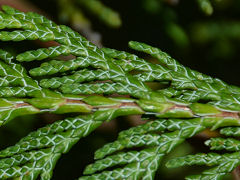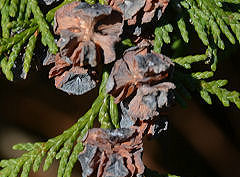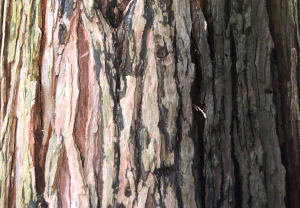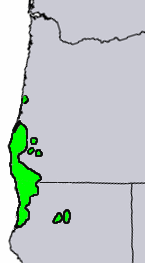
Leaves: Small, flat scales, often with a white X pattern below. The scales are smaller than those of other native cedars.

Note X pattern on lower surface
Cones: Round and woody, similar to Alaska cedar and cypress cones.

Bark: Brown with flat ridges and furrows. Thick on old trees.

Where it grows: Along the Pacific Coast from Coos Bay, Oregon to the Klamath River in California, extending to 5000 ft. in the Siskiyous.

Locations: At the Oregon Caves National Monument on the Big Tree Trail (42.10124 -123.40306). You can find several plantings in Portland's Forest Park, for example at the top of the Dogwood trail (45 32.397 -122 43.967) and at miles 14.3 and 16.6 on the Wildwood Trail.
Port Orford cedar at Hoyt Arboretum
Uses: Similar to western red cedar for decking and fencing. However, limited supply and popularity in Japan contribute to high prices. Cultivars are popular ornamentals.
Names: The scientific name honors Peter Lawson, who first introduced Port Orford cedar cultivars. Other common names: white cedar, Oregon cedar.
Note that Port Orford Cedar is not a true cedar. That is, its genus is not Cedrus, the genus of the true cedars from the middle-east.
© 2012 Ken Denniston